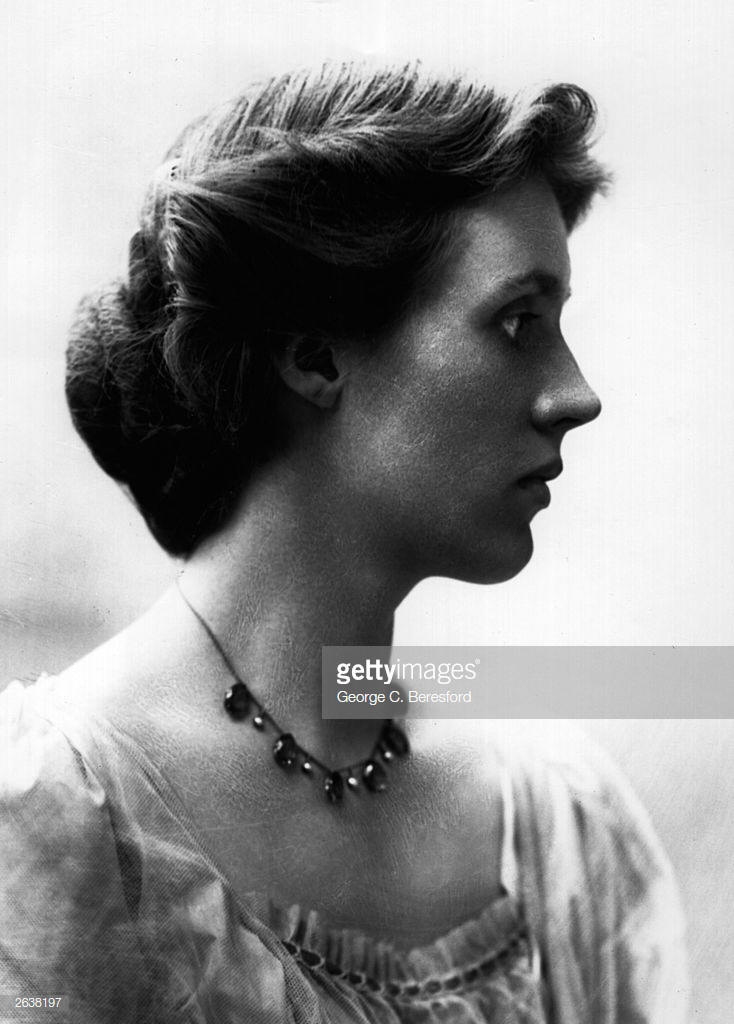 Vanessa Bell (née Stephen; 30 May 1879 – 7 April 1961) was an
English painter and
interior designer, a member of the
Bloomsbury Group and the sister of
Virginia Woolf.
Vanessa Bell (née Stephen; 30 May 1879 – 7 April 1961) was an
English painter and
interior designer, a member of the
Bloomsbury Group and the sister of
Virginia Woolf.Queer Places:
22 Hyde Park Gate, Westminster
King's College London, Strand, London WC2R 2LS, Regno Unito
26A Canonbury Square, London N1 2AL, Regno Unito
37 Gordon Square, Kings Cross, London WC1H, Regno Unito
50 Gordon Square, Bloomsbury, London WC1H, Regno Unito
Wissett Lodge, Lodge Ln, Wissett, Halesworth IP19 0JQ, Regno Unito
Charleston Farmhouse, West Firle, Lewes BN8 6LL, Regno Unito
St Peter, The St, West Firle, Lewes BN8 6LP, Regno Unito
 Vanessa Bell (née Stephen; 30 May 1879 – 7 April 1961) was an
English painter and
interior designer, a member of the
Bloomsbury Group and the sister of
Virginia Woolf.
Vanessa Bell (née Stephen; 30 May 1879 – 7 April 1961) was an
English painter and
interior designer, a member of the
Bloomsbury Group and the sister of
Virginia Woolf.
Vanessa Stephen was the elder daughter of Sir Leslie Stephen and Julia Prinsep Duckworth.[1] The family, including her sister Virginia, brothers Thoby (1880–1906) and Adrian (1883–1948), and half-brothers George Duckworth and Gerald Duckworth, lived at 22 Hyde Park Gate, Westminster, London. She was educated at home in languages, mathematics and history, and took drawing lessons from Ebenezer Cook before she attended Sir Arthur Cope's art school in 1896. She then studied painting at the Royal Academy in 1901.
Later in life, she alleged that during her childhood she had been sexually molested by her half-brothers, George and Gerald Duckworth.[2]
After the deaths of her mother in 1895 and her father in 1904, Vanessa sold 22 Hyde Park Gate and moved to Bloomsbury with Virginia and brothers Thoby and Adrian,[3] where they met and began socialising with the artists, writers and intellectuals who would come to form the Bloomsbury Group. The Bloomsbury Group's first Thursday evening meetings began at Bell's house in Gordon Square.[1] Attendees included: Lytton Strachey, Desmond MacCarthy, and later on, Maynard Keynes, Leonard Woolf, Roger Fry, and Duncan Grant.
She married Clive Bell[3] in 1907 and they had two sons, Julian (who died in 1937 during the Spanish Civil War at the age of 29)[1] and Quentin. The couple had an open marriage,[3] both taking lovers throughout their lives. Bell had affairs with art critic Roger Fry and with the painter Duncan Grant,[1] with whom she had a daughter, Angelica in 1918, whom Clive Bell raised as his own child.[4]

Vanessa Bell, née Stephen
Duncan Grant (1885–1978)
National Portrait Gallery, London
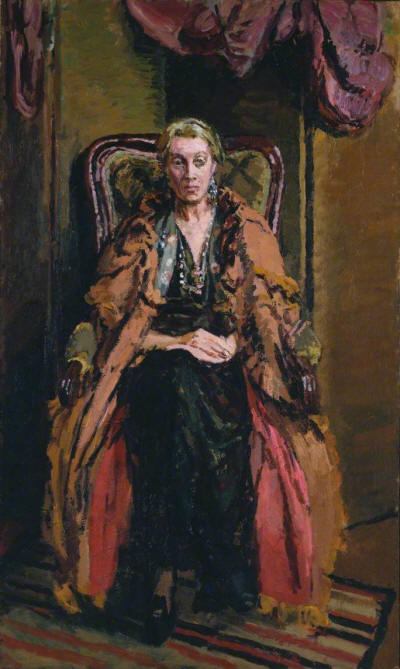
Vanessa Bell
Duncan Grant (1885–1978)
Tate
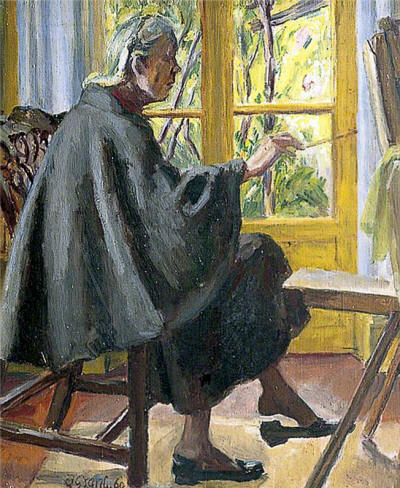
Vanessa Bell (1879–1961), Painting at La Souco
Duncan Grant (1885–1978)
Charleston
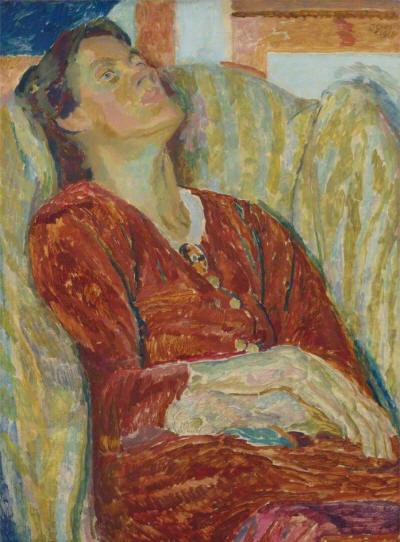
At Eleanor: Vanessa Bell
Duncan Grant (1885–1978)
Yale Center for British Art
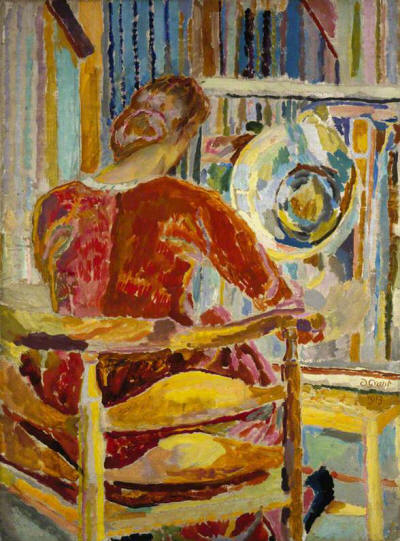
Vanessa Bell Painting
Duncan Grant (1885–1978)
National Galleries of Scotland, Scottish National Gallery of Modern Art
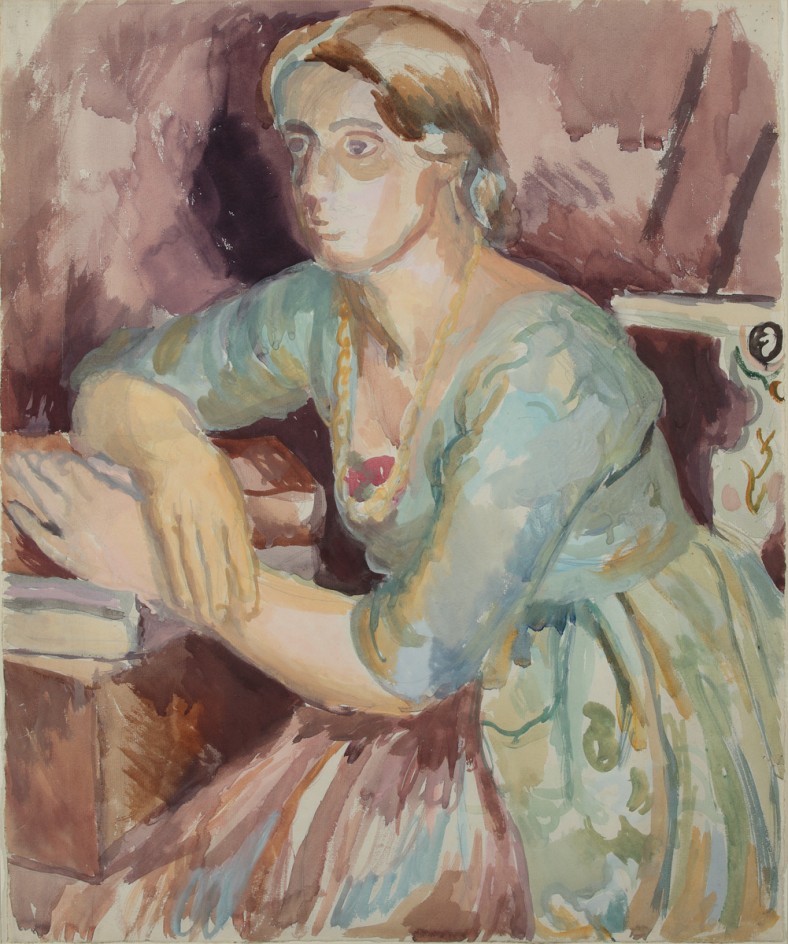
Vanessa Bell
Duncan Grant (1885–1978)
St Peter's College, University of Oxford
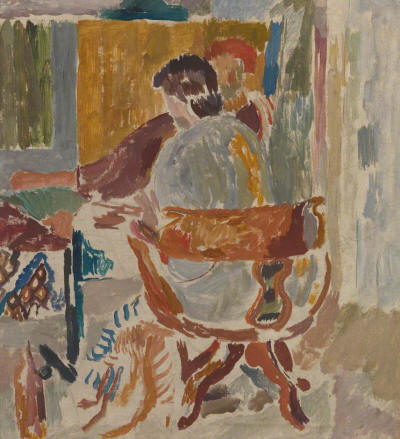
Vanessa Bell at Her Easel
Duncan Grant (1885–1978)
Yale Center for British Art

Vanessa Bell (1879–1961)
Duncan Grant (1885–1978)
Leicester Museum & Art Gallery

Vanessa Bell, née Stephen
Duncan Grant (1885–1978)
National Portrait Gallery, London

Still Life with a Bust of Vanessa Bell
Duncan Grant (1885–1978)
University of Hull Art Collection

Vanessa Bell (1879–1961), in a Red Headscarf
Duncan Grant (1885–1978)
Charleston
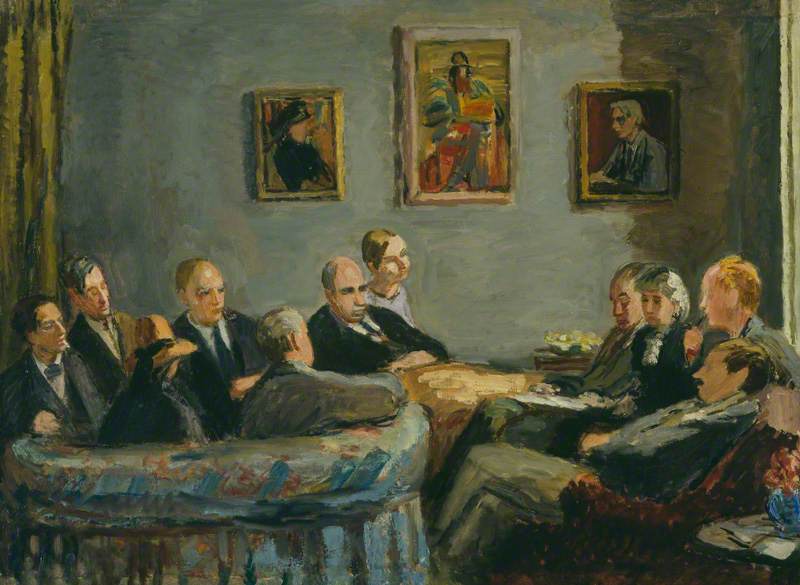
The Memoir Club (Duncan Grant; Leonard Woolf; Vanessa Bell; Clive Bell; David Garnett; Baron Keynes; Lydia Lopokova; Sir Desmond MacCarthy; Mary MacCarthy; Quentin Bell; E. M. Forster)
Vanessa Bell (1879–1961)
National Portrait Gallery, London

Virginia Woolf (1882–1941) c.1912
Vanessa Bell (1879–1961)
National Trust, Monk's House
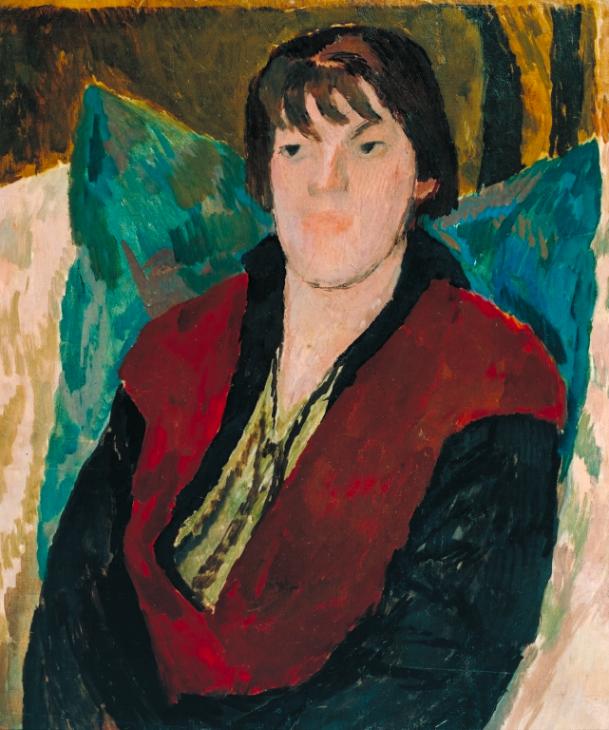
Iris Tree by Vanessa Bell

Music Room designed by the owners themselves Vanessa Bell and Duncan Grant
Charleston Farmhouse
St. Peter's Church, West Firle, Sussex
In 1906, when Bell started to think of herself as an artist, she formed the Friday Club to create a place in London that was more favourable
Vanessa, Clive, Duncan Grant and Duncan's lover David Garnett moved to the Sussex countryside shortly before the outbreak of the First World War, and settled at Charleston Farmhouse near Firle, East Sussex, where she and Grant painted and worked on commissions for the Omega Workshops established by Roger Fry. Her first solo exhibition was at the Omega Workshops in 1916.[5] On April 7, 1961, Bell died from a brief illness at Charleston, Firle and was buried in the Firle Parish Churchyard near Duncan Grant.
to painting.[6] Vanessa was encouraged by the Post-Impressionist exhibitions organised by Roger Fry, and she copied their bright colours and bold forms in her artworks. In 1914, she turned to Abstraction.[7]
Bell rejected the examples of Victorian narrative painting and rejected a discourse on the ideal and aberrant qualities of femininity. Some of Vanessa Bell’s works were related to her personal life.[8] She used her artistry to design and illustrate book jackets.[9] For example, her illustration for To the Lighthouse, the book by her sister Virginia Woolf, which was not published until 1927, is about a beach with lighthouse that was a part of Bell’s and Woolf's childhood in St Ives, Cornwall.[10]
Bell is one of the most celebrated painters of the Bloomsbury group. She exhibited in London and Paris during her lifetime, and has been praised for innovative works during her early maturity and for her contributions to design.[11]
Bell's paintings include Studland Beach (1912),[10] The Tub (1918), Interior with Two Women (1932), and portraits of her sister Virginia Woolf (three in 1912), Aldous Huxley (1929–1930), and David Garnett (1916). Bell worked with Duncan Grant to create murals for Berwick Church in Sussex (1940-42).[12]
In 1932, Vanessa Bell and Duncan Grant were commissioned to produce a dinner service for Kenneth Clark.[13] With the active participation of his wife Jane Clark, and much to her husband's surprise, they produced the Famous Women Dinner Service: 50 plates painted with portraits. This work was believed lost until 2017, but had actually survived intact.
My published books: